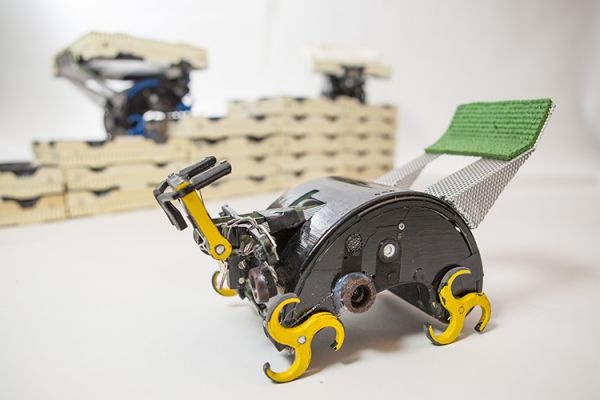 A shoe-sized robot, shaped like a VW Beetle and built by a 3D printer, scuttles in circles on a Harvard lab bench. Its hooked wheels, good for climbing and grasping, also let it trundle on the flat. As I watch, it scoops a styrofoam block on to its back and then scrabbles across a layer of already deposited blocks to flip the new one into place. An impressive feat – especially given that it does this without human control, using simple rules about its environment to build a whole structure.
A shoe-sized robot, shaped like a VW Beetle and built by a 3D printer, scuttles in circles on a Harvard lab bench. Its hooked wheels, good for climbing and grasping, also let it trundle on the flat. As I watch, it scoops a styrofoam block on to its back and then scrabbles across a layer of already deposited blocks to flip the new one into place. An impressive feat – especially given that it does this without human control, using simple rules about its environment to build a whole structure.
The robot is making a tower – like a termite might
"If you want to build underwater, if you want to build a Mars base, it's going to be very difficult, dangerous and expensive to send people," says Justin Werfel of the Wyss Institute for Biologically Inspired Engineering at Harvard University. "But if you could send a team of robots to go build the habitat as the first step – that's the really long-term vision."
To spur his swarm into action, Werfel gives the robots a mathematical model of the structure to be built, say, a pyramid. Each robot uses that model to calculate where it will place the next block it picks up, moving on to another spot if its planned drop-off has already been completed by another bot. It uses nothing but basic ultrasound and infrared sensors, as well as an internal accelerometer, to figure out how many blocks it has climbed, and where it is in relation to the structure it is building.
As well as pyramids, the bots can build castles and towers.




